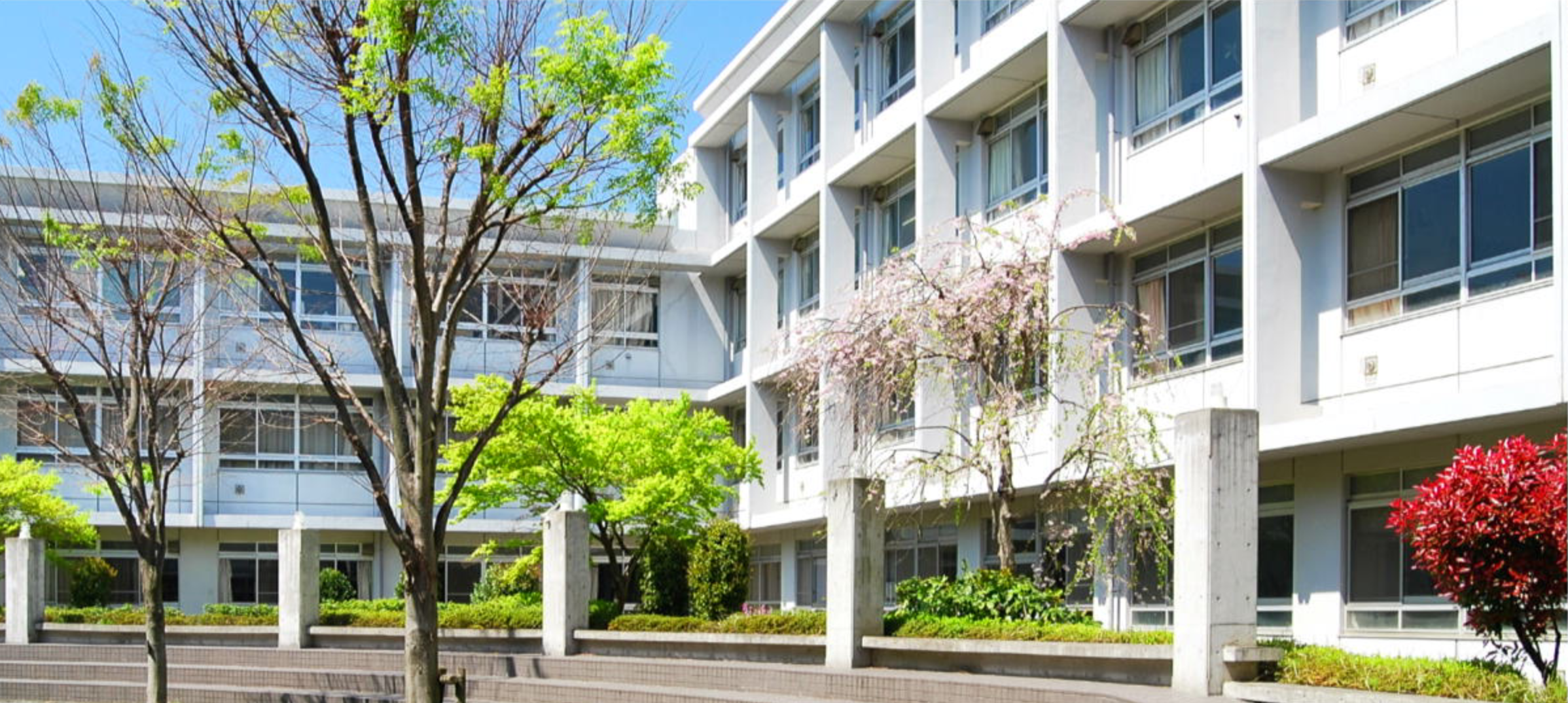Every November through the following February, you’ll be able to scout middle school players and visit them to ask them to come play baseball at your high school. These opportunities will appear as a weekly activity with a map of Japan in red blocks. As your school gets more famous, you’ll be able to scout more frequently, in more prefectures, with better information about players, and better players will be more likely to accept your invitation.
Year 1 #
Early on in your career, your school is considered weak, and doesn’t have the resources needed to sustain a wide-reaching scouting program. Accordingly, you can’t scout much, you don’t get much information about players, and you can’t scout very far from home. As you progress in school fame/renown, this will improve.
The Year 1 Drought #
Don’t be discouraged if you don’t get many scouting opportunities in your first offseason, and maybe none at all (as has been reported recently in the community). Even if you don’t get to do any scouting, you’ll still get new players enrolling in April. They just might not be the players you want or the quality you want.
A Common Scenario #
More than likely, you’ll see scouting cards come through the practice and activity deck. The card has a red, blocky map of Japan on it and looks very different from the other types of cards.
Early on, you won’t get a ton of chances to scout, so if you see one in your hand, don’t let it get discarded. It’s possible that there are a finite number of cards to see vs. a finite number of scouting activity instances.
Successive Years #
As your school gets better and more famous, you’ll get more chances to scout players, with better information, and with a wider range. You’ll also get more players enrolling the following April. So when you start out and lose your six 3rd years to retirement in the autumn, and you’re down to 12 total players for the winter, it feels like a pretty bleak situation. But you’ll get 6-7 new players the next April, and 7-8 players the year after that, slowly building up the bench and alternate squad.
The Scouting Process #
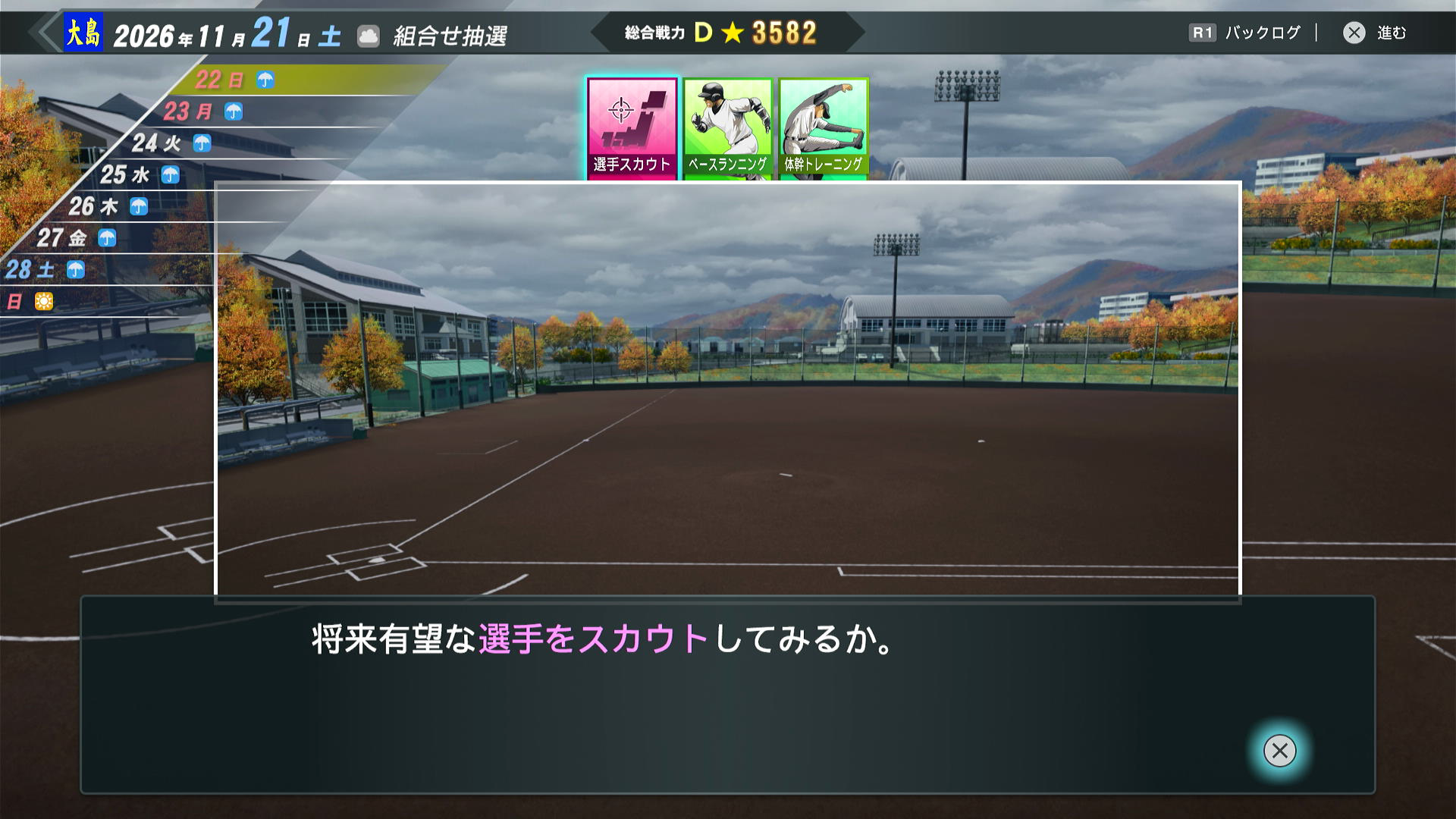
Should we scout some promising players?
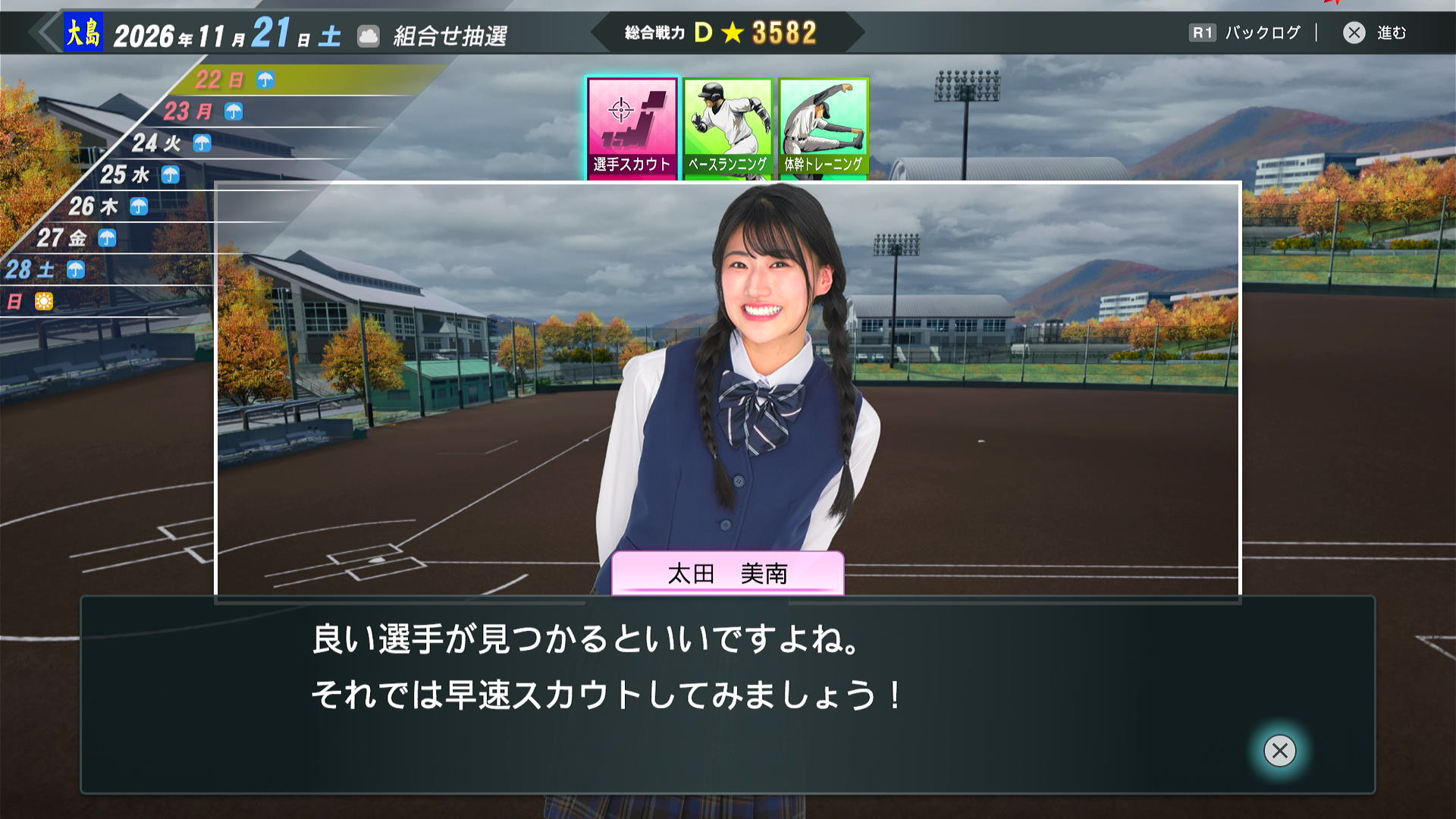
それでは早速スカウトしてみましよう!
Club Manager Minami Ota: I hope we can find some good players.
So let’s start scouting right away!
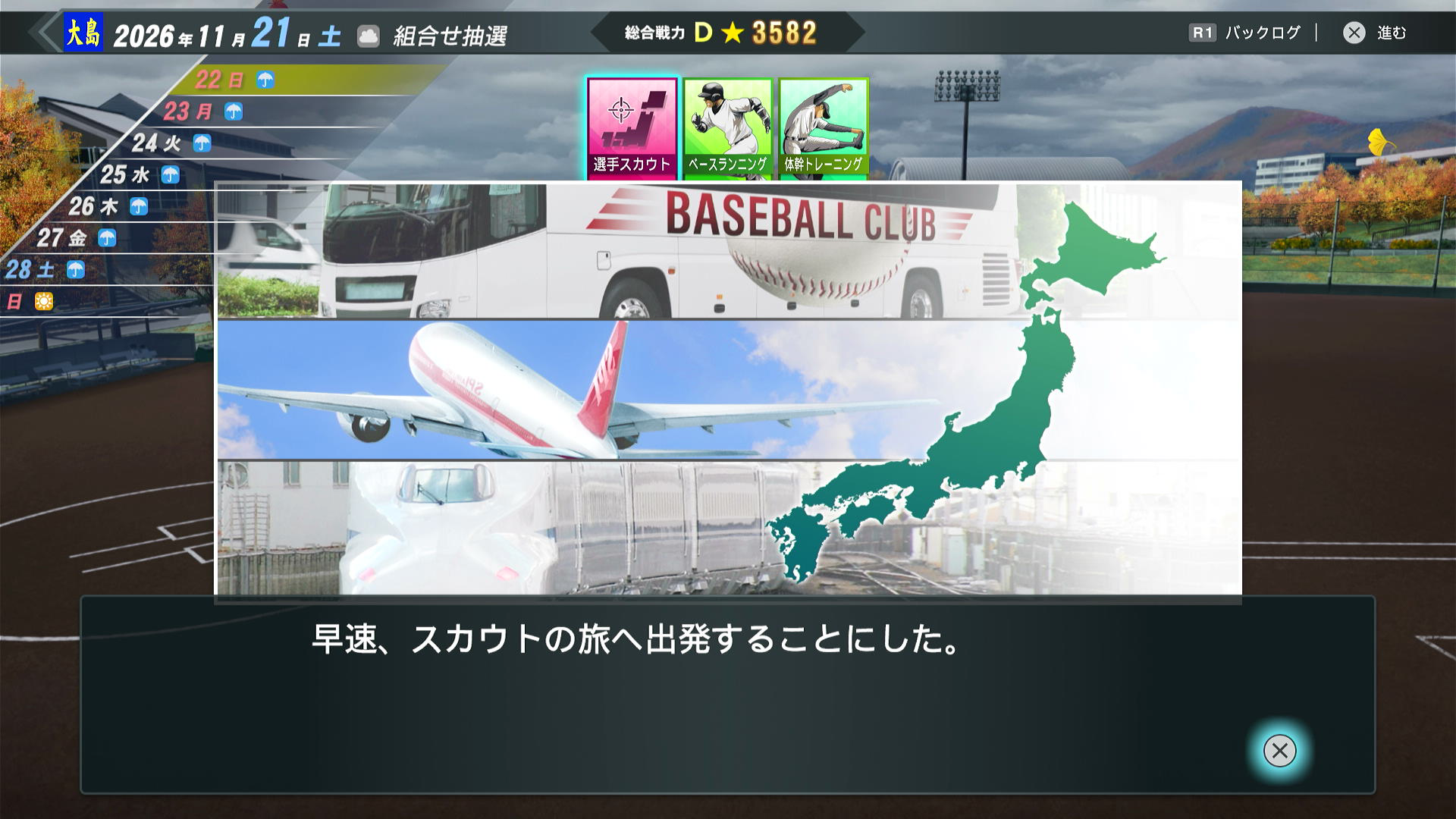
I immediately decided to set off on a scouting trip.
When you start the scouting activity, you’ll be presented with the regional/prefecture map of Japan, similar to when you were first creating your school. The areas you can scout will be shown with an active color in the map and the list of regions or prefectures will enable the buttons where you’re able to scout.
As you highlight prefectures, you’ll be able to see a breakdown of what type of players are available in the status bar text at the bottom of the screen with the following player types:
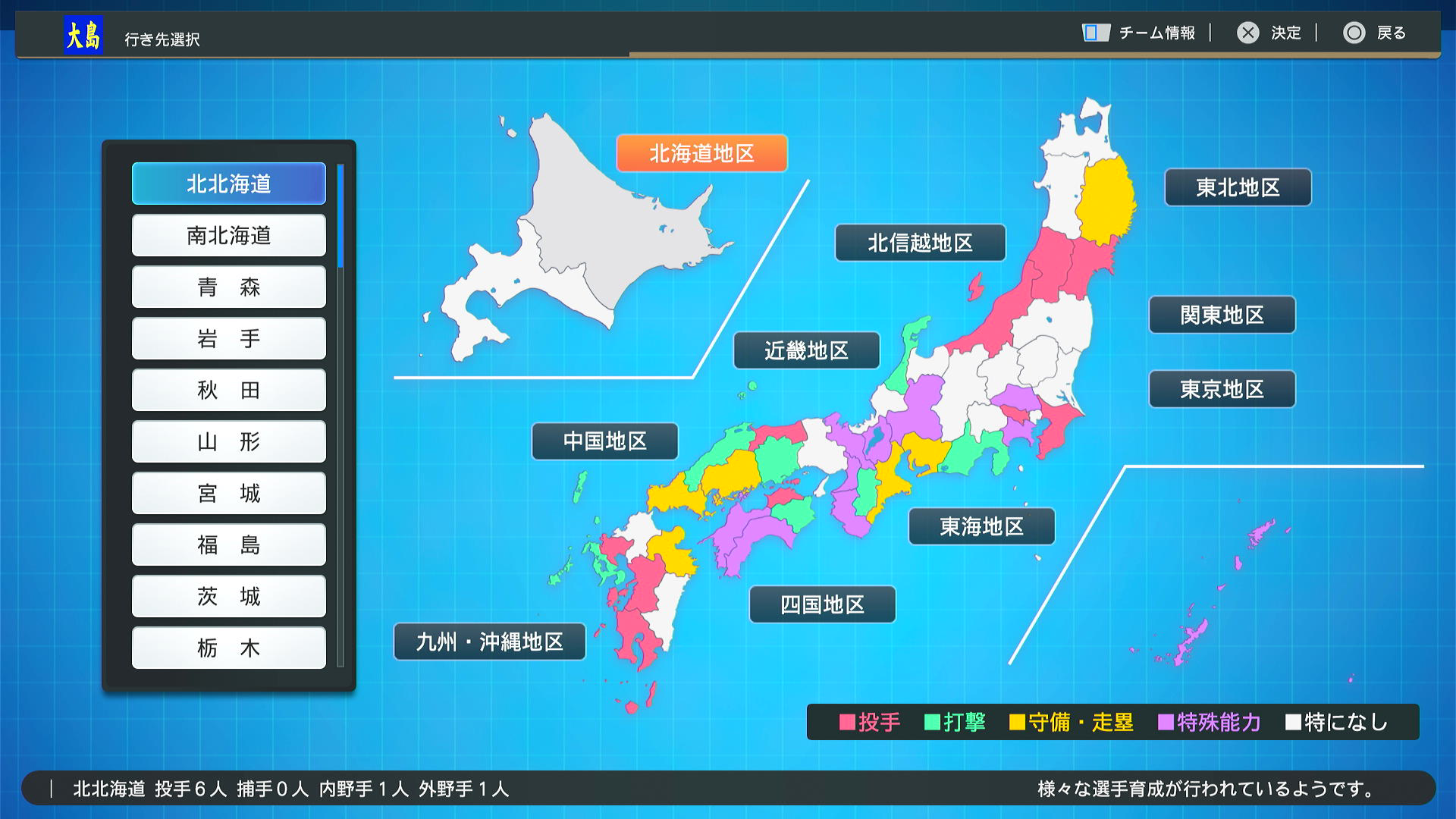
Roster Depth #
You can have a glance at your roster by pressing the left half of the touchpad on the PS5, with a similar control for PC. Check the button reference at the top of the screen. Have a look at what positions your current 2nd year players play (they’ll be 3rd years starting in April, and they’re retiring from the club when your tournament run ends in the summer or autumn), and think about the depth of your squad. If you have enough pitchers, for example, but none of them are any good, maybe you need to scout some quality pitchers. Or if you have a good fielding catcher that can’t hit at all, maybe one of your current players works their way into a pinch hitter role and you backfill that player’s position. Only you can decide what you need, really.
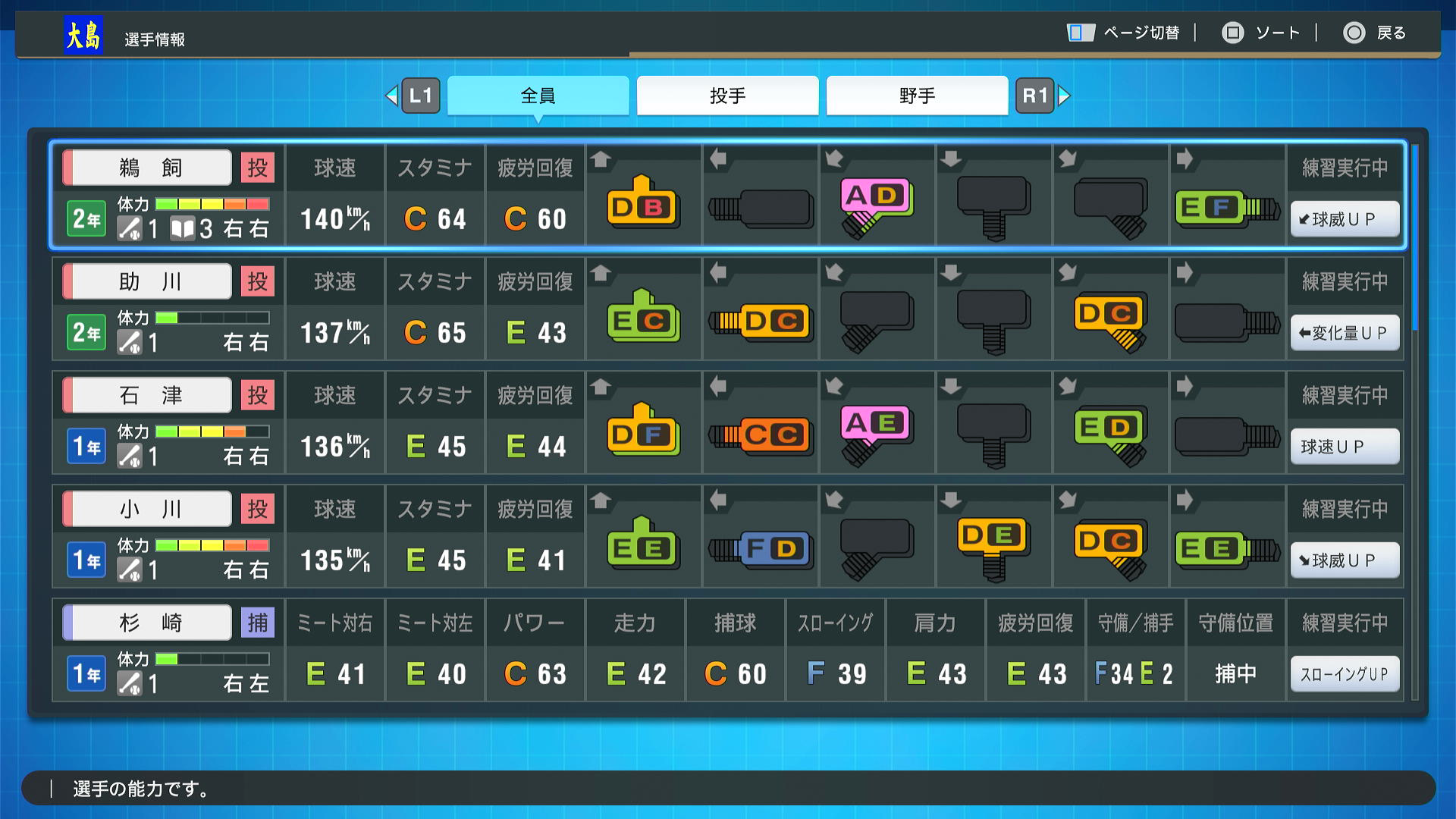
Location Selection #
Once you’ve decided what positions you need, take a spin through the available prefectures and find one that has the position that you need, and select it. This is a binding choice, and the game will confirm the choice with a dialog, so make sure you get this right. Your next scouting card can take you to a different location, so you’re not locked in forever, but you are locked in for this scouting trip once you confirm the prefecture.
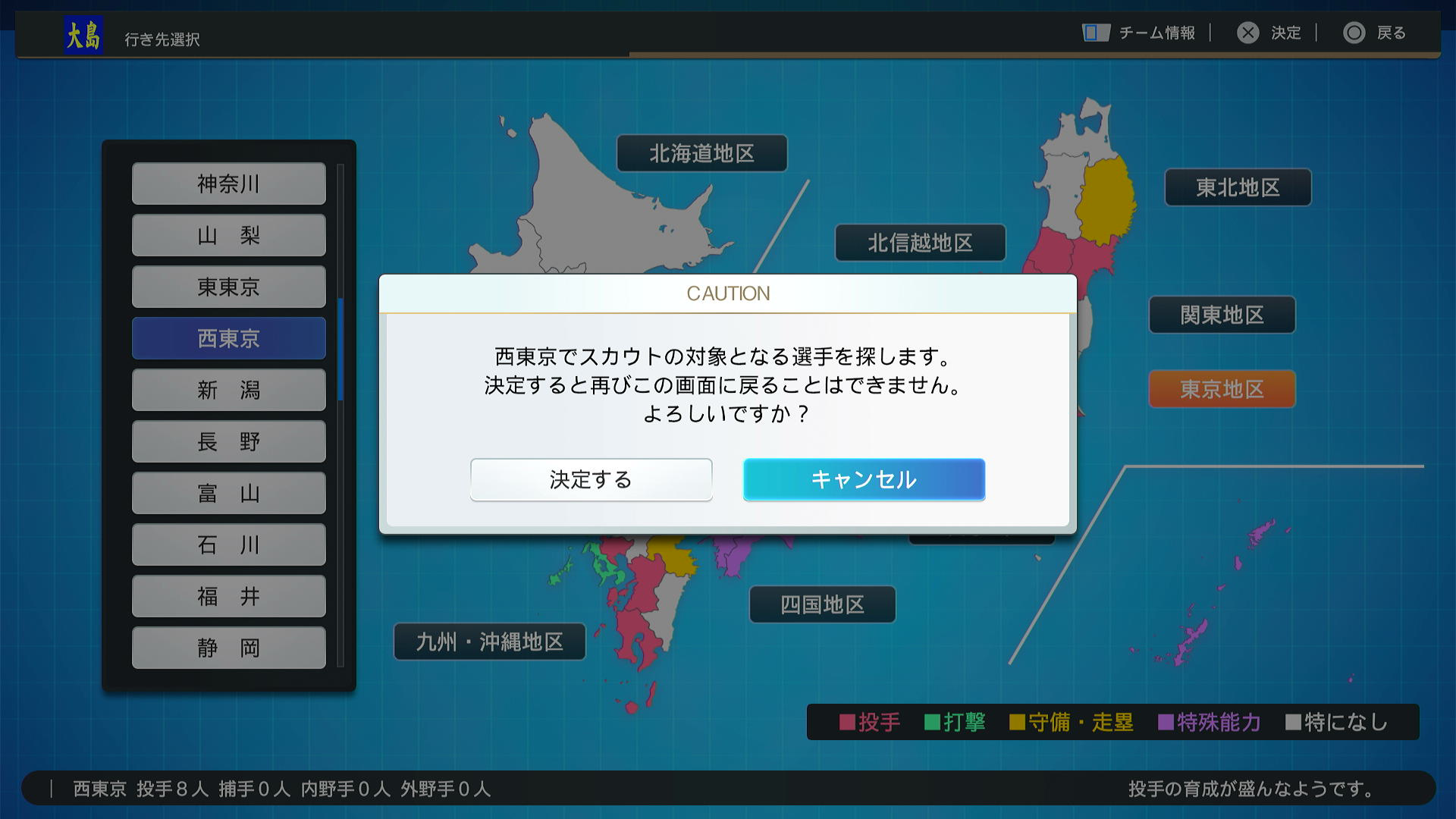
決定すると再びこの画面に戻ることはできません。
よろしいですか?
決定する
キャンセル
Search for players in West Tokyo to scout.
Once you confirm, you will not be able to return to this screen.
Are you sure?
Confirm
Cancel
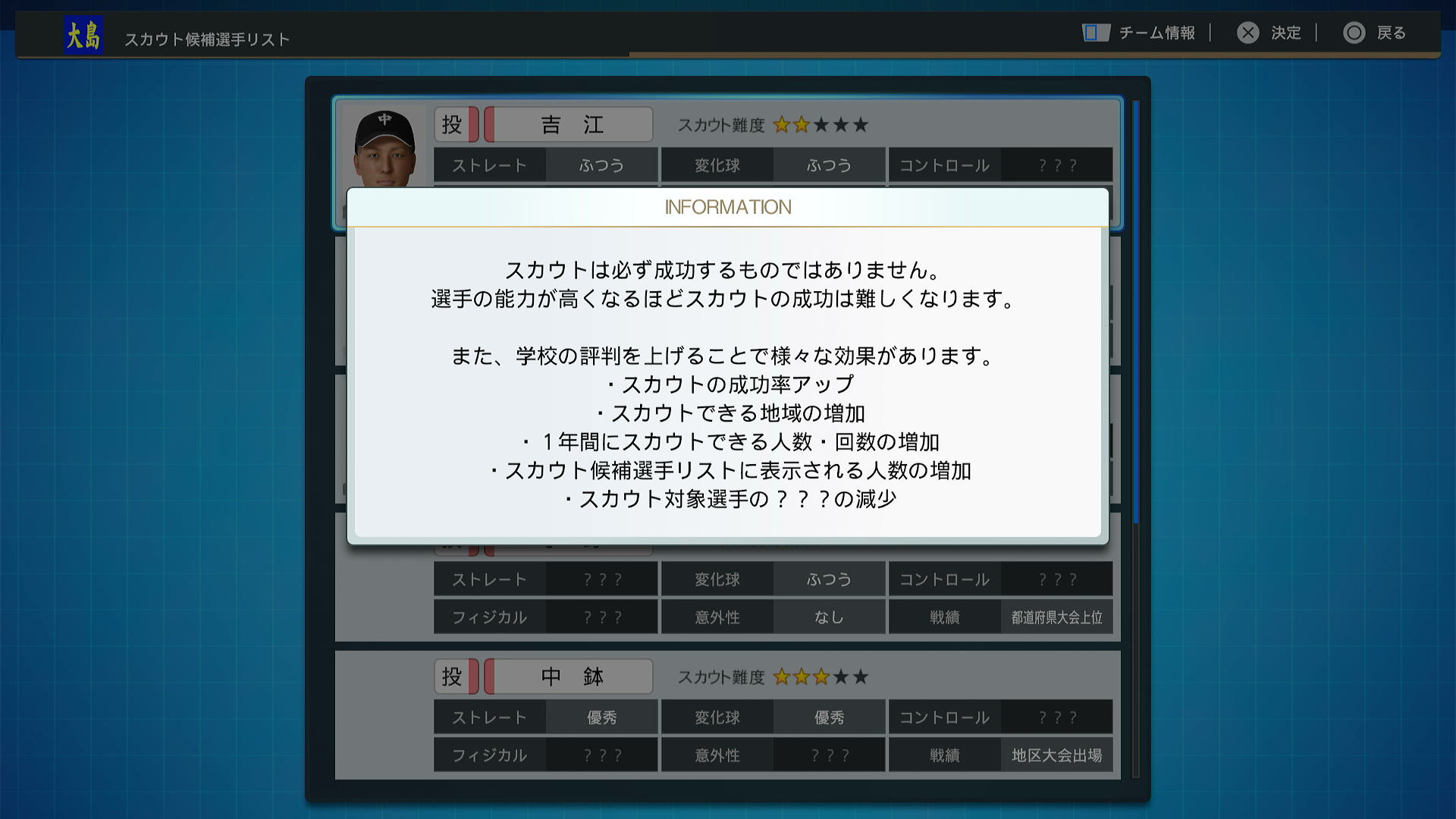
選手の能力が高くなるほどスカウトの成功は難しくなリます。
また、学校の評判を上げることで様々な効果があリます。
* スカウトの成功率アップ
* スカウトできる地域の増加
* 1年間にスカウトできる人数・回数の増加
* スカウト候補選手リストに表示される人数の増加
* スカウト対象選手の???の減少
Scouting is not guaranteed to be successful.
The higher the player’s ability, the more difficult it will be to succeed in scouting the player.
Increasing the school’s reputation also has various (positive) effects:
- Increased success rate of scouting
- Increased number of areas that can be scouted
- Increased number of people and number of times that can be scouted in a year
- Increased number of people displayed on the list of scout candidate players
- Decreased number of unknown attributes of players eligible for scouting
Scoutable Players List #
Next you’ll see a list of players available to visit, probably somewhere from 5-10 in total. Each player shows a few pieces of information:
- Position
- Name (obviously) - 名前
- Star rating
- Proficiency at various aspects of baseball
- For pitchers: ストレート for fastballs, 変化球 for breaking balls, コントロール for control, フィジカル for physical (general strength), 意外性 for other skills
- Accomplishments - participated in a prefectural tournament (県大会出場), participated in a national tournament (全国体系出場), etc.
Notable is what you don’t see, actual stats. So you’re not going to see that a pitcher had a 1-something ERA, or a kid hit .400 or anything like that. You’ll have to make do with the aspects that are available, and understand that they might not be right. Scouts are human after all, and a young school might make mistakes about players.
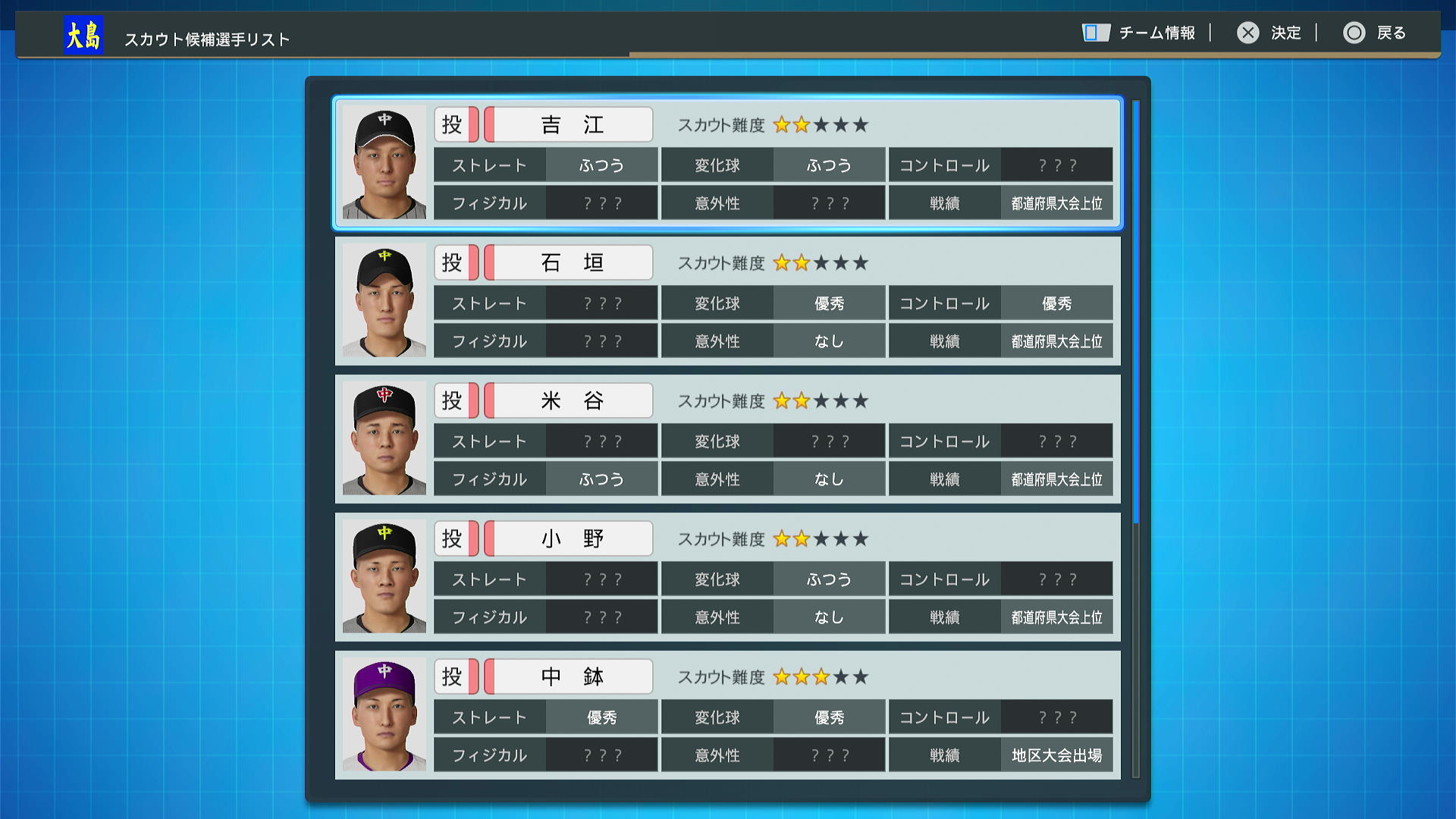
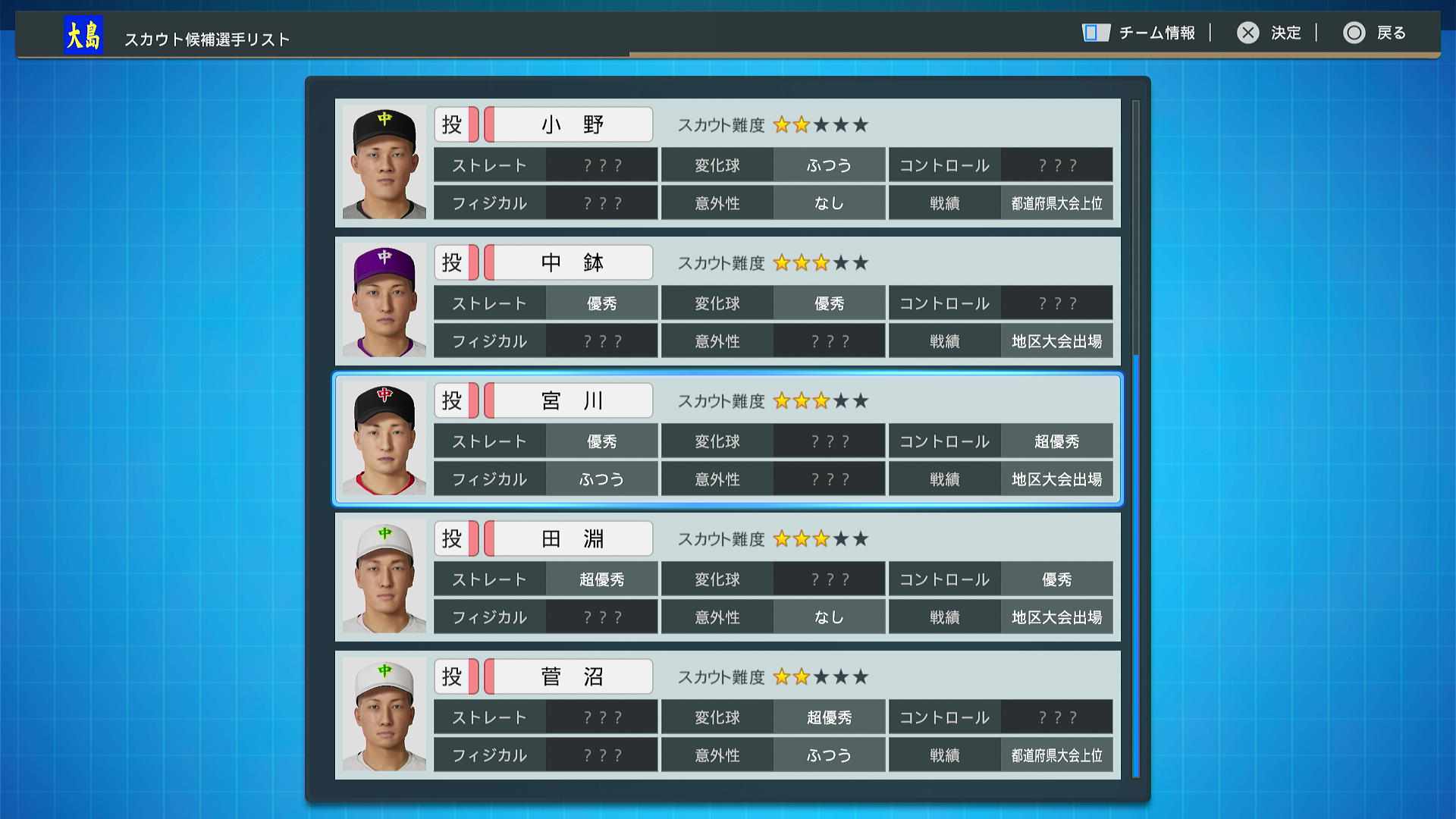
I only got two and three star pitchers in West Tokyo, and weirdly, West Tokyo was only 8 pitchers this time, with no other positions represented.
Selecting a Player #
Once you’ve agonized over the players available to you and picked out a winner, select them with X and confirm in the dialog. You’ll be shown a short conversation with the player and will see your reactions to the conversation afterward. Don’t be sad if it seems like the conversation didn’t go well. I’ve had a player enroll after a bad conversation before. Your school can win a few games in the spring to make your case stronger, and if you get another scouting opportunity, you can scout them again to improve your odds.
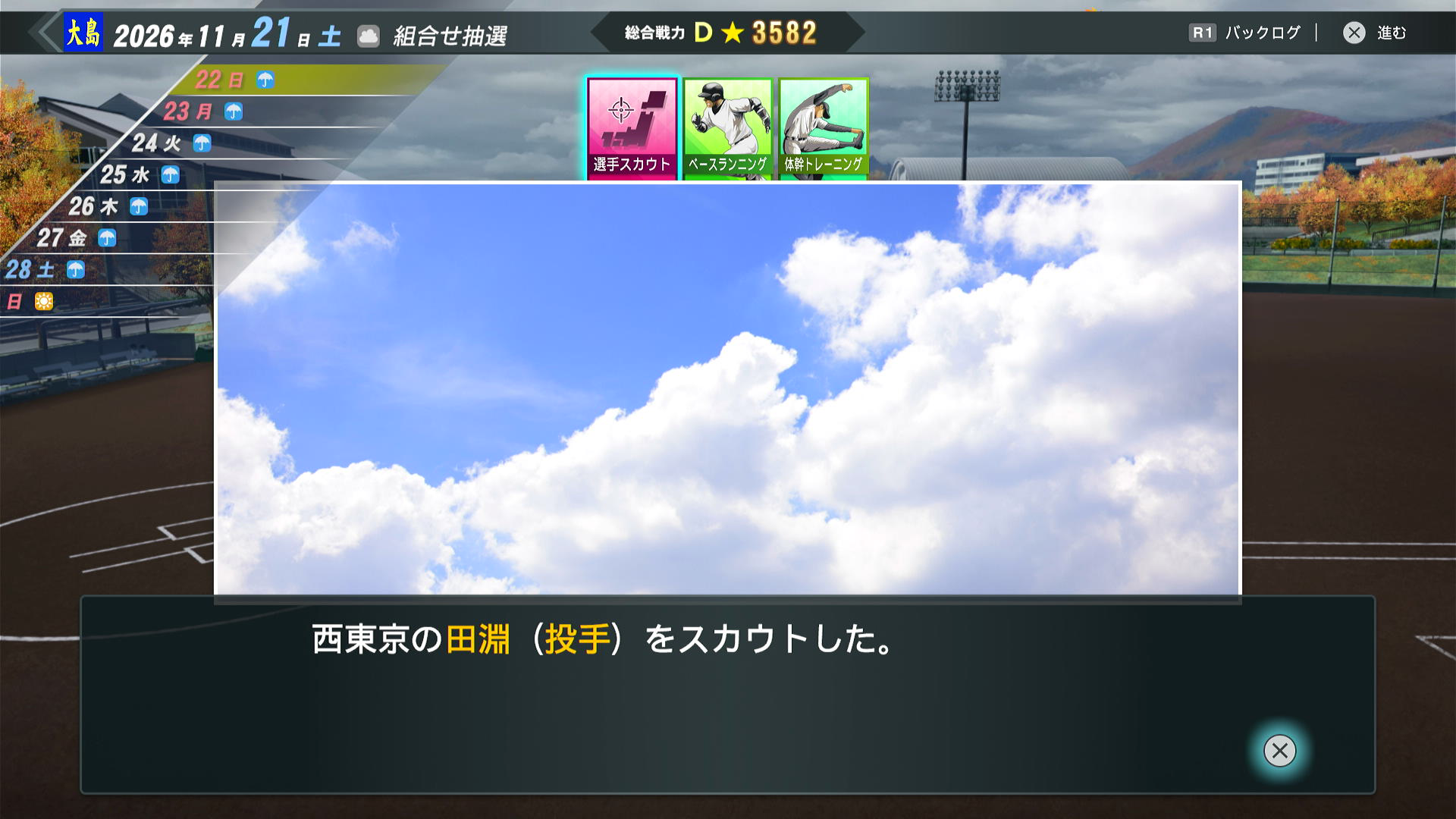
We scouted Tabuchi (pitcher) from West Tokyo.
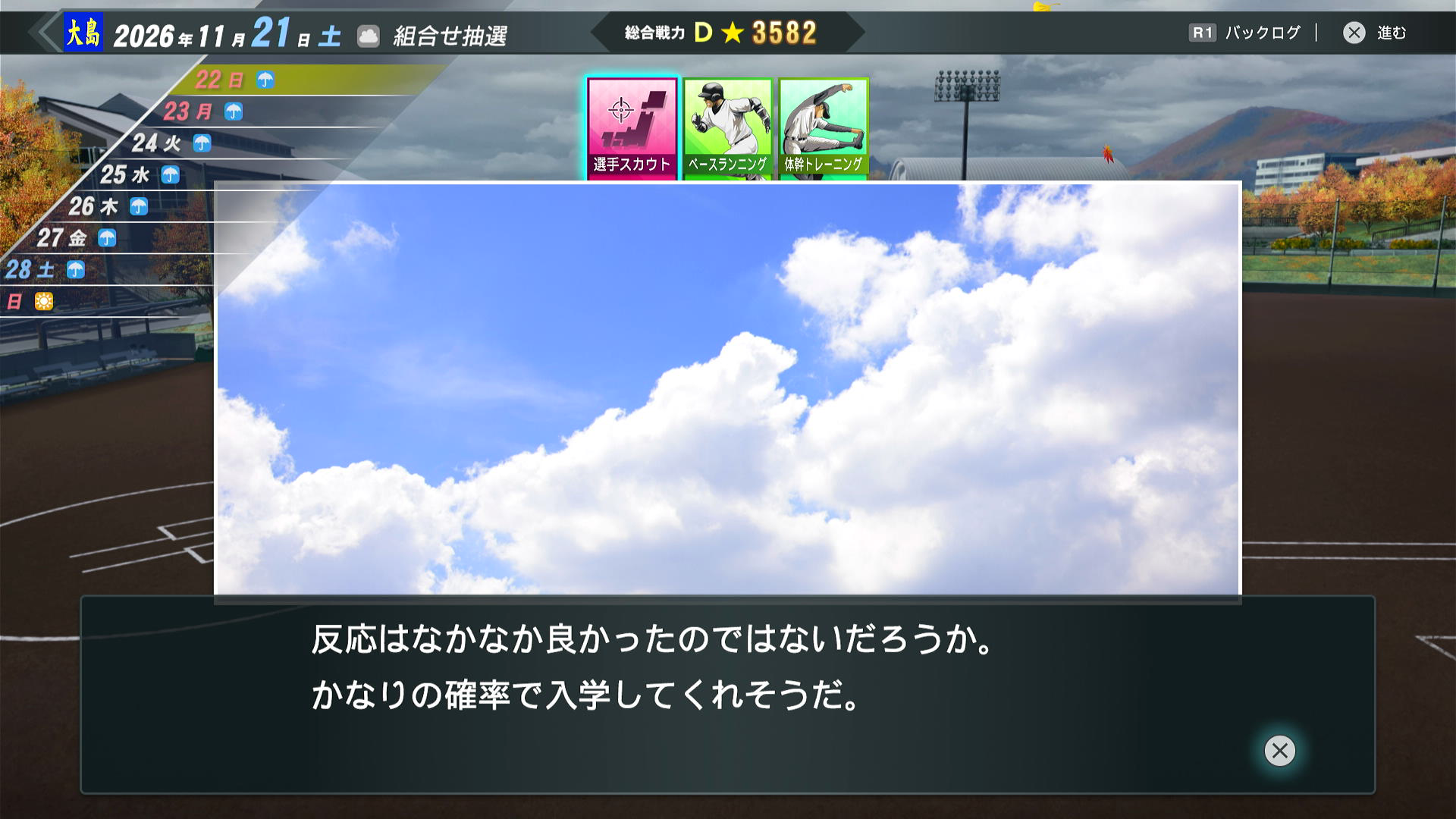
かなリの確率で入学してくれそうだ。
The response was quite good.
There seems to be a fairly good chance that this student will enroll.
Conclusion #
And that’s basically it for the scouting trip. Remember that you might get another scouting chance in the same year, even multiple others, so if you need multiple positions, scout one on one trip and the next on the next trip. Even if you don’t scout exactly what you need, you’re still getting 6+ new players in April. They might not be very good, but you’ll have them.
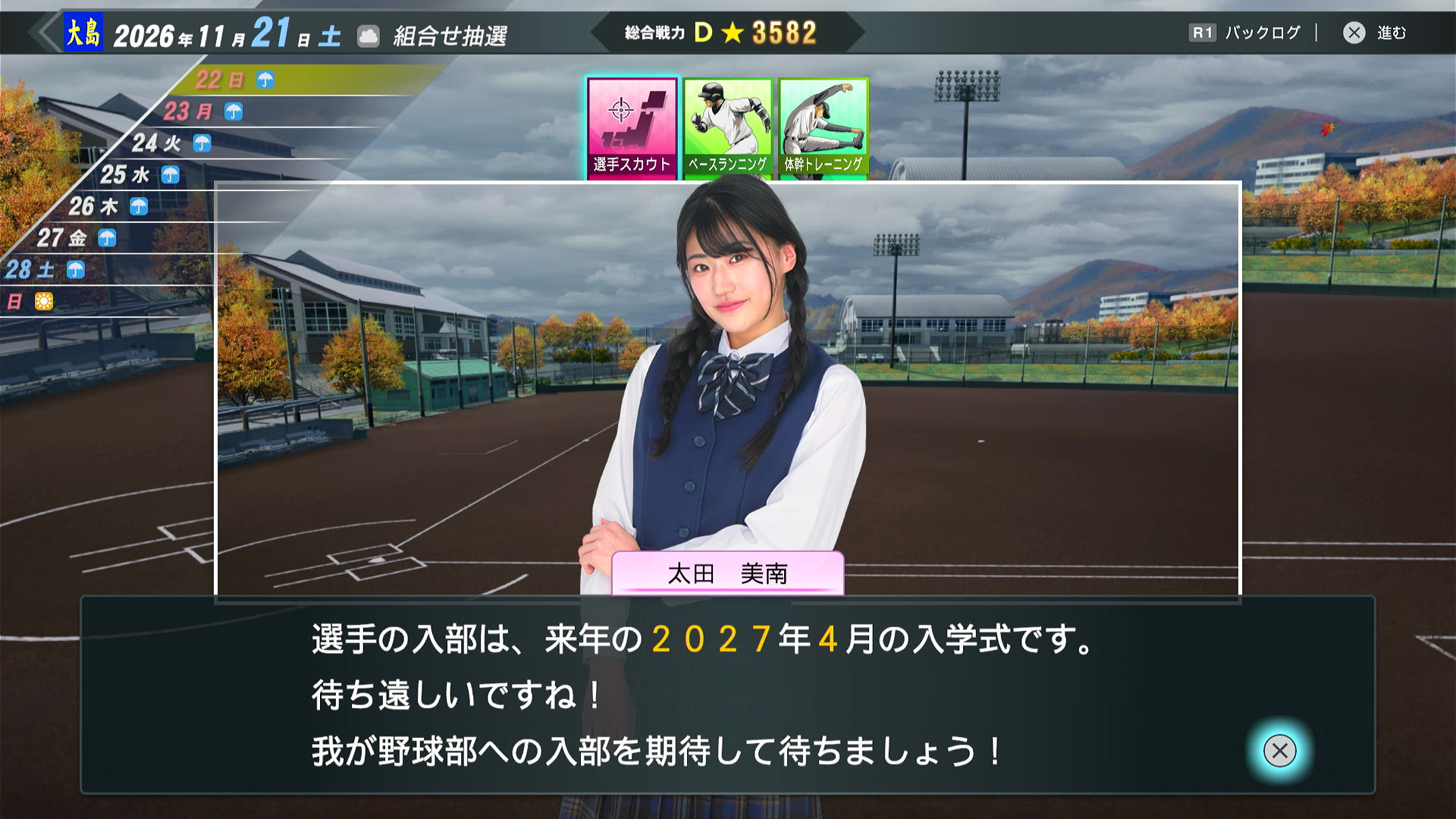
待ち遠しいですね!
我が野球部への入部を期待して待ちましよう!
Players will join the team at the entrance ceremony in April 2027. [next year]
We can’t wait!
Let’s look forward to them joining our baseball team!
